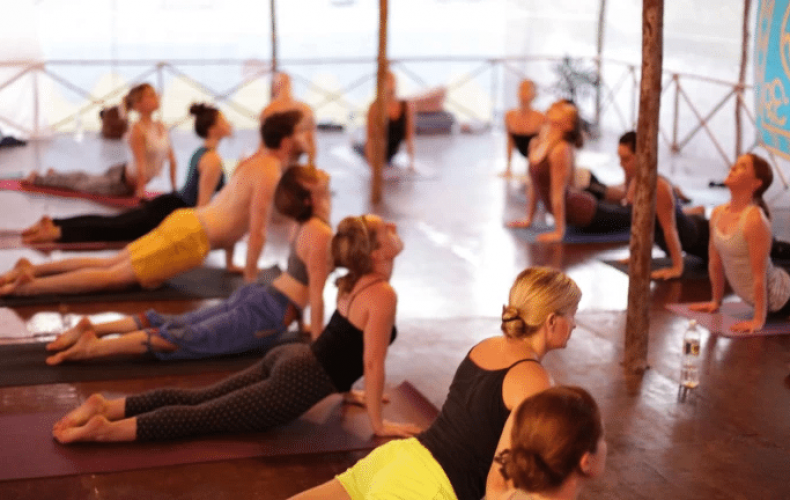Importance of Liability Waivers For Yoga Teachers

With its graceful and meditative movements, yoga may seem like a risk-free exercise.
However, injuries can happen, and for students who assumed that yoga was 100% safe, they may feel inclined to file a lawsuit if they’re injured.
That’s why it’s vital to protect your yoga practice with a yoga liability waiver. There are plenty of cases of fitness instructors being protected by the waiver their students signed.
Presenting a clear picture of yoga’s risks for your clients and having them acknowledge those risks provides peace of mind that you are legally protected.
Why a Proper Yoga Waiver is Important
Yoga provides substantial benefits to one’s overall health and wellness ranging from increased flexibility to better stress management. However, the strenuous poses that are often involved can injure those who are novices or injury-prone.
Common Yoga Injuries
- Bruises from falls: Handstand or Adho Mukha Vrksasana poses can result in falls that can potentially bruise patients.
- Strained hamstrings: Particular poses can overstretch tight or poorly warmed-up hamstrings. This injury can easily occur with handstand or Adho Mukha Vrksasana poses.
- Rib strains: The constant twisting of the torso can strain the intercostal muscles (muscles in between the ribs) and put stress on rib bones themselves.
- Joint stress: Yoga can put a strain on joints such as the elbows (chaturanga pose), wrists, shoulders, knees (lotus position), and the hips (various poses).
- Aggravation of chronic conditions: Certain yoga poses can aggravate conditions such as glaucoma and high blood pressure. In the case of high blood pressure, positions such as the shoulder stand or Salamba Sarvangasana can damage arterial linings, which may lead to blood clots.
The rate of these injuries is generally low but some participants are at an increased risk for sustaining them. This becomes an issue when they’re unaware of their risks or simply don’t disclose certain conditions that increase their risk.
Court Cases Against Yoga Teachers
In October 2014, Amalia Webster claimed she was injured by yoga instructor Kurt Bumiller during a yoga session at Claremont Yoga. She claims that he placed a belt around her waist and right leg to help her position her right leg over her left. Webster also claims that Bumiller pushed down on her lower back while she was locked in “cow position,” effectively injuring her knee. Webster went on to sue Bullier and Claremont Yoga for negligence.
Ultimately, Webster’s case was dismissed because she failed to present evidence that Bumiller had breached the standard of care or even caused her injuries. Webster failed to tell Bumiller that she was in pain when he physically guided her through the poses.
Additionally, it’s well known that yoga teachers will touch their students (when appropriate) to help them execute poses.
The purpose of detailing this case is to highlight that no waiver was mentioned. Although Bumiller was ultimately let off, had he used a yoga liability waiver, it’s possible that Webster may have seen right away that it was her responsibility to tell Bumiller about her comfort level. And it could have saved Bumiller the hassle of dealing with a court battle as well as being unnecessarily thrust into the public eye.
Negligence Information for Yoga Teacher Liability Insurance
Negligence, which is the basis of the case mentioned above, along with other claims can turn ugly. While Bumiller was let off, other instructors may have not been so fortunate, especially if the student was able to put together a more compelling case. That’s why liability insurance for yoga teachers is also vital.
Keep in mind that a yoga liability waiver doesn’t offer you full protection from lawsuits. To cover your name and business even further, you should look into liability insurance policies that will cover you as a yoga teacher. In the rare instance that a student files a claim against you, these insurance policies will provide you and your business with the financial protection a waiver cannot on its own.
Yoga Liability Waiver Language
Wording a liability form for yoga instruction may seem like a time-consuming and research-intensive process. After all, waivers involve their share of “legalese,” which is likely off-putting for individuals who aren’t lawyers themselves.
The waiver would likely require your students to alert you about their limitations or medical conditions so that you can guide them with care. Your waiver will also include clauses that waive your students’ right to sue for ordinary negligence or when sustaining an injury that is inherent in yoga.
The most important thing is to ensure that your waiver is enforceable. Waiver laws and the wording required varies across countries, states, and provinces. Any ambiguity, loopholes or errors in your waiver can easily be exploited by lawyers in court. This is why it is always recommended that you consult with a lawyer when drawing up your waiver forms.
Protect Yourself and Your Students
Yoga provides countless benefits to its participants but it’s not a risk-free activity. Although most students are upfront about their experience, some won’t be and may file a claim in the event of an injury.
Our WaiverForever program is ideal for yoga instructors. It allows you to create secure online waivers in a simple and effective fashion. It makes the waiver creation process more approachable, and you can tailor it to address the risk factors of your yoga practice.
With a well-written yoga waiver form, you will give yourself peace of mind knowing that you are protected against frivolous negligence claims.